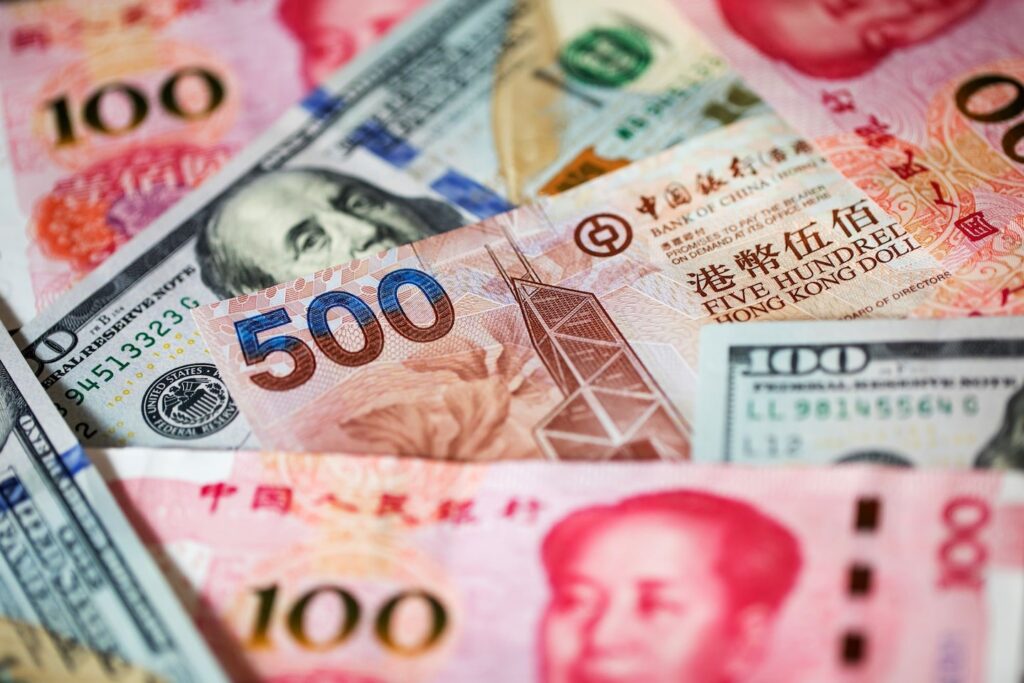
The Hong Kong Monetary Authority, the de-facto central bank, has a mandate to keep the currency trading at HK$7.75 to HK$7.85 per US dollar. The current band was set in 2005 and has never been broken. When it gets too close to one end or the other, the HKMA intervenes, either by buying or selling the city’s dollars. When HKMA uses its foreign exchange reserves to buy Hong Kong dollars from the commercial banks, the aggregate balance of Hong Kong dollars in the banking system — interbank liquidity — goes down accordingly. From May 11 through November, the HKMA’s intervention shrank the balance by more than 70%. That tighter liquidity pushes up local borrowing costs.
2. Why does keeping the peg matter?
First and foremost, it’s considered an anchor for financial stability. A stable currency is important for an open economy like Hong Kong, where trade and logistics are key drivers. Investors park their money in Hong Kong because the currency is relatively safe and easily convertible — one of the reasons the city became a global financial center in the first place. Breaking the peg would upset that whole equation.
3. What usually moves the Hong Kong dollar?
Often it’s when local borrowing costs don’t move in tandem with the US. For example, the gap between the Hong Kong Interbank Offered Rate (Hibor) and its US counterpart (dollar Libor) widened significantly after the Fed began its aggressive rate hikes, because liquidity in Hong Kong was still very ample. (Hibor and Libor represent a daily average of what banks say they would charge to lend to one another.) That gap makes it attractive for traders to borrow in Hong Kong dollars to buy US dollars to earn the higher yield. That so-called carry trade can push the local currency toward its weak end of HK$7.85, prompting the HKMA to intervene. That strategy became less appealing in the latter part of 2022, as the authorities’ purchase of local dollars pushed three-month Hibor higher than its US equivalent.
4. What’s the concern now?
Less liquidity as a result of defending the peg has led to increased borrowing costs this year for companies and individuals in Hong Kong at a time when stringent Covid-19 restrictions, especially regarding travel, continue to weigh on the economy and hurt employment. In addition, Hong Kong’s property sector is already under pressure from an exodus of Hong Kong residents, whether for pandemic-related or political reasons after Beijing tightened its grip on the city in 2020. Higher mortgage costs won’t help.
5. Should people be worried about the peg?
Officials in Hong Kong say no but some hedge funds disagree. In November, Bill Ackman, the billionaire founder of hedge fund Pershing Square Capital Management LP, said he’s betting against the Hong Kong dollar and its peg with the greenback. Boaz Weinstein, founder of Saba Capital Management, tweeted support for the trade, which he said had a payoff upwards of 200-to-one. But officials repeatedly said there was no need to change the peg. In July, Financial Secretary Paul Chan said that the city’s “huge” foreign exchange reserves — about $440 billion, equivalent to about 1.7 times the monetary base of the Hong Kong dollar — are enough to maintain the currency peg. A representative for the HKMA on Nov. 24 reiterated there’s no plan nor need to tweak its foreign-exchange system system.
6. Did the peg ever come under pressure before?
Sustained periods of outflows have occurred before during previous bouts of stress such as the global financial crisis, SARS epidemic and during US-China tensions under then-President Donald Trump. At that time, Chan noted that China’s central bank also can provide US dollars through a currency swap line should Washington ever impose sanctions on the city. China has the world’s largest foreign-exchange reserves at more than $3 trillion. John Greenwood, the architect of Hong Kong’s dollar peg and now an independent consultant at International Monetary Monitor, said that because the city has a currency board tasked solely with maintaining the peg, rather than a central bank that conducts domestic monetary policy, “speculation against the Hong Kong dollar always fails.”
7. Why not peg the Hong Kong dollar to the Chinese yuan instead?
There are various factors to support the status quo. The US dollar is fully convertible and can be traded freely in large amounts on foreign exchange markets. The yuan doesn’t fit that bill for now. The US dollar also dominates as an international reserve currency, while the yuan still has a ways to go to boost its reserve status. Hong Kong’s de facto central bank chief Eddie Yue said the peg has worked well for nearly 40 years and there are no plans to change it. However, Hong Kong has tended over the years to adopt currency arrangements that facilitate cross-border trade with the mainland. Pegging the local dollar to the yuan “could be a long-term possibility” — if the yuan were used more in Hong Kong and internationally, Goldman Sachs Group economists including Hui Shan and Andrew Tilton wrote in May. Politics could be another driver, if Hong Kong were to lose its semi-autonomous status and be integrated into the mainland. As George Magnus, an economist and associate at the University of Oxford China Centre, put it: “It’s China’s choice whether it wants to keep the peg in place.”
–With assistance from Tania Chen.
More stories like this are available on bloomberg.com

